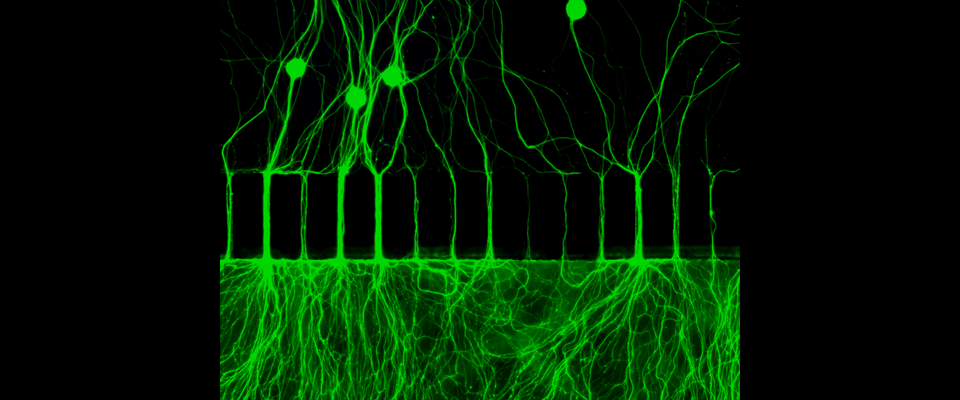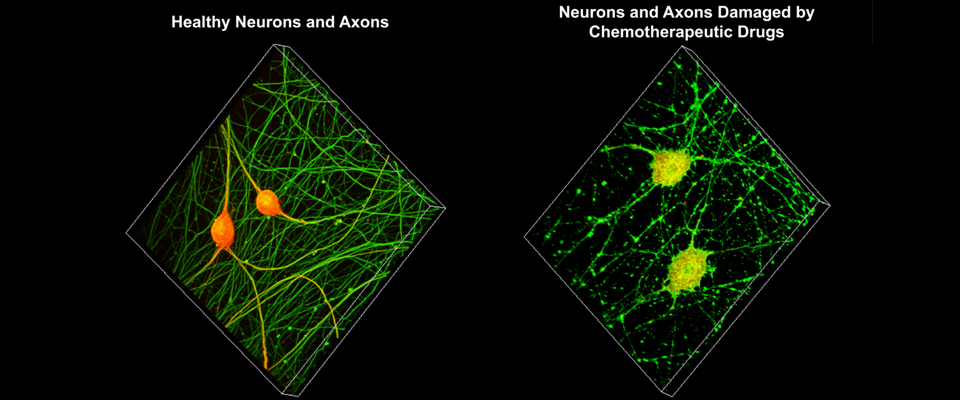You are here
Laboratory for Axonal and RNA Biology
Willis laboratory has a long-standing interest in sensory neuron axonal biology, particularly focused on how local events within the axon are important in driving normal and pathological behaviors. The axonal and dendritic processes of neurons represent functional domains of cytoplasm that can be separated from their cell body by vast distances. This separation provides a biological setting where the cell uses locally synthesized proteins to both autonomously respond to stimuli and to retrogradely signal the cell body of events occurring is this distal environment. This ability is a critical component of successful regeneration following injury or damage to the neuron. Our early work focused on determining which proteins can be locally synthesized in regenerating axons and to begin to understand how their axonal levels can be modulated. Sub-cellular localization of mRNAs into neuronal processes is regulated by specific interactions between RNA and RNA-binding proteins. We were the first to clearly link the role of a specific RNA-binding protein to transport and translation of multiple RNA cargos and to axonal regeneration following injury. We are currently focused on how aberrant axonal mRNA transport and local protein synthesis contribute to chronic pain states, peripheral neuropathy, and failure of neuromuscular junctions. The main objective of our research is to understand how axonal protein synthesis contributes to neural regeneration/repair, and how failure of this normal biological process can contribute to neuronal pathophysiology.

Epifluorescent image of DRG neurons grown in microfluidic devices. These devices allow for separation of the axons from the cell body, facilitating studies on local events within the axonal segments.

3-D rendering of confocal z-stacks of dorsal root ganglion neurons. These images depict the damage done to axons and cell bodies as a result of vincristine treatment. Treatment with chemotherapeutic agents often cause nervous system damage that leads to peripheral neuropathy. Our lab is studying mechanisms to protect and repair these cells from this type of damage.

